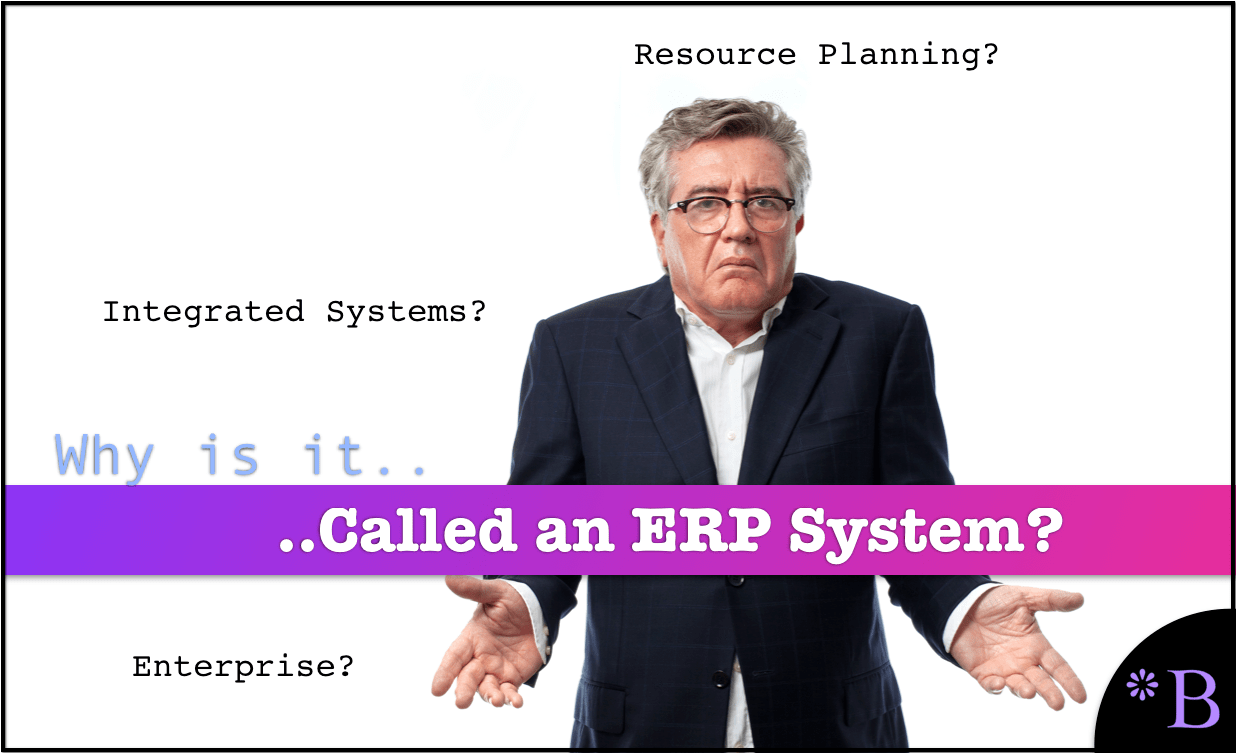How ERP Systems Got The Name Enterprise Resource Planning
Executive Summary
- ERP systems are strangely named.
- In this article, we cover how ERP systems got their strange name.

Introduction
Often people do not consider why ERP systems have the name that they do. The story is not what most people expect.
See our references for this article and related articles at this link.
How Gartner Coined the Term by Adjusting the Term MRP II
In the 1980s, Gartner took the term “MRP II,” which was manufacturing resource planning coined by Oliver Wight and created the term ERP. This software category became the most successful application category in history.
Why Did Gartner Coin the Term?
There was a merger of finance and MRP systems. This meant vendors were buying MRP applications and merging them into their financial systems. At this time, the “integrated single system” was all the rage. Thus, Gartner took the word “enterprise” and replaced “manufacturing,” hence the resulting term of ERP.
What Was MRP II?
MRP II was an aborted concept that tried to expand on the original MRP (or MRP I). At this time, many companies were complaining that the MRP systems they had purchased were not meeting their expectations. Thus MRP II was a concept design to reform the MRP software space. Oliver Wight proposed that the problem was that the system was not sufficiently integrated into the rest of the company’s systems.
The Logic of These Terms
Analysis #1: The Logic of the Term MRP II
The term MRP II never made any sense. MRP II was so broad that it did not have much to do with MRP I. MRP I or just MRP is material requirements planning. Notice that MRP II is manufacturing resource planning. So same acronym, but different term.
Modern Use of the Term MRP II
Today, and for at least 10 to 15 years, MRP II has been little used.
I propose that if even people with many years of supply chain planning experience were asked to describe how MRP I is different from MRP II, very few people could do it. The terms MRP I and MRP II are too similar and it makes it difficult to keep them straight. This is why Oliver Wight most certainly should have come up with a different acronym to represent an enlargement of MRP I. It is a poor naming practice to call something that is a greatly increased scope as the same acronym as the smaller scope item. For example, we would not call an overall car, an “engine II.” While “engine I” is the engine of the car, and engine II is the car.
Analysis #2: The Logic of the Term ERP
The term ERP makes as little sense as the term MRP II. This is because ERP is not primarily focused on planning. In fact, the MRP procedure and DRP procedure are the only planning procedures in the overall application. Furthermore, ERP systems have proven complicated systems to perform planning as they are transaction processing systems rather than planning systems. We explain this topic in more detail in the article What is the Difference Between MRP from ERP?
Gartner’s Mistake
Gartner is considered the standard-bearer, but they don’t have a history of thinking through things when they come up with an idea. And it was no different with ERP. The word enterprise just means the software is bought by a company, which is not very descriptive. The word resource implies that the software is very focused on resources or resource planning, which is not true. And the word planning makes it sound like the software is adept at planning, ERP systems are not. ERP systems combine financials, materials or inventory, sales order management, and manufacturing in one application that uses a single database.
However, while Gartner demonstrates little in the way of logic, due to their influence, they are able to get their ideas adopted due to their status in the industry.
Conclusion
ERP systems were poorly named by Gartner, which simply modified an already existing term (MRP II), but which never received much traction.
Today people that work in software know what ERP systems are, but the origin of the term has been generally lost as we have moved away from the software category’s initial introduction.